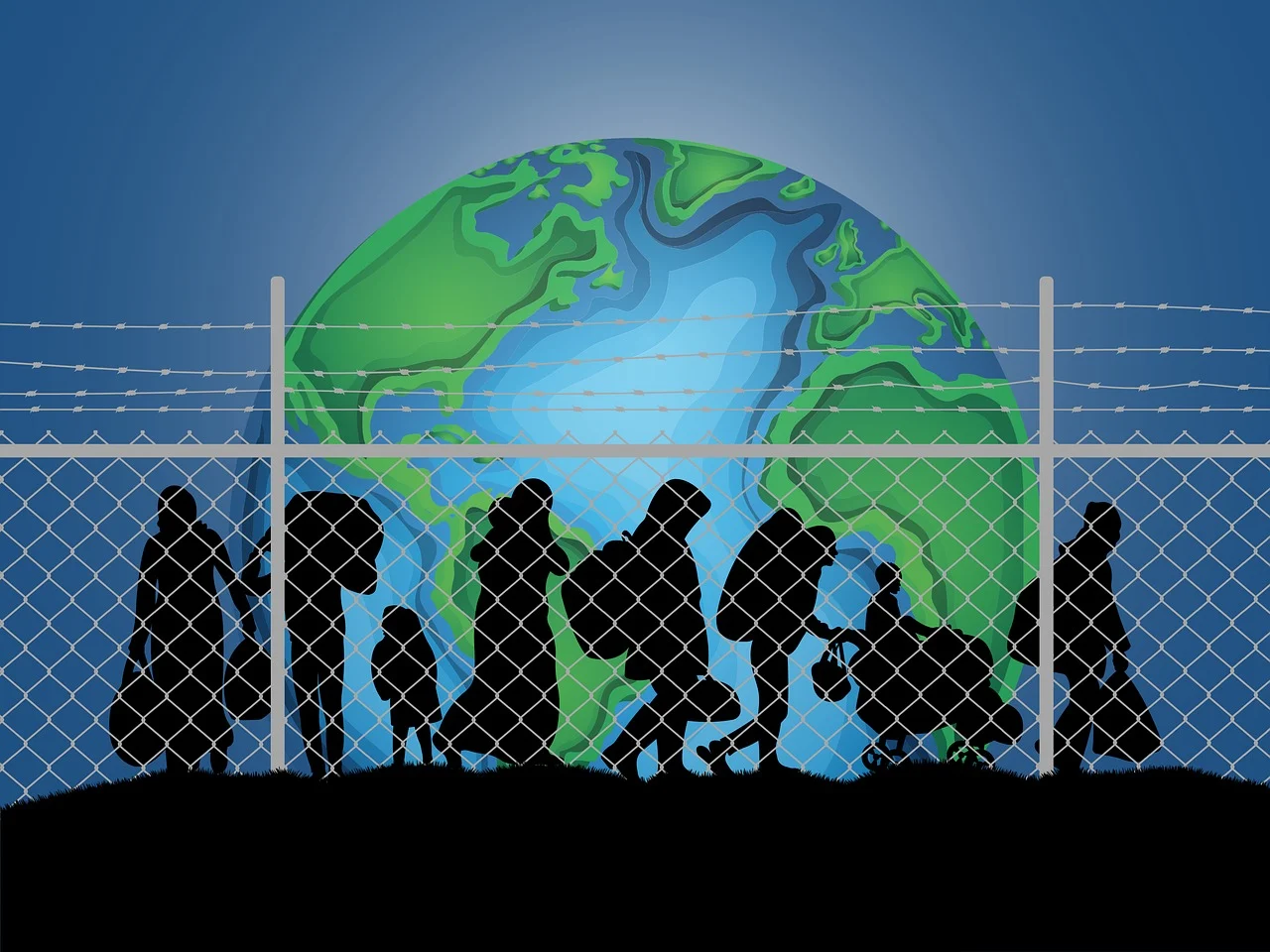The issue of illegal immigration continues to be one of the most contentious debates in global politics and policy-making. While countries are looking for ways to secure their borders, prevent human trafficking, and control migration, the current immigration processes often pose barriers that discourage legal entry while facilitating illegal migration. By streamlining and simplifying immigration processes, nations can reduce illegal immigration and human rights abuses associated with it, such as exploitation, child labor, and human trafficking. More importantly, reforming these systems can help uphold the dignity of migrants, improve accountability, and foster safer, more humane environments for both immigrants and citizens.
The Current Immigration Landscape
The global immigration landscape is complex, marked by diverse policies that vary from country to country. Immigration processes, particularly for asylum seekers and those in need of family reunification, can be slow, cumbersome, and often unclear. Requirements for visas, asylum applications, and work permits can be difficult to navigate, which leads many individuals to seek alternative, often illegal, routes to enter a country. According to the United Nations High Commissioner for Refugees (UNHCR), 26.6 million people were displaced globally in 2020, many fleeing conflict or persecution, with a significant portion risking their lives to cross borders illegally.
Current immigration processes are often characterized by long wait times, ambiguous rules, and excessive paperwork, pushing many individuals to turn to smugglers or exploitative employers to bypass bureaucratic hurdles. This, in turn, leads to a range of negative consequences, including human trafficking, exploitation in the labor market, and severe human rights violations.
The Case for Streamlining Immigration Processes
Simplifying and digitizing immigration procedures offers multiple benefits, both for migrants and host countries. By reducing bureaucratic hurdles, establishing clear instructions, and ensuring predictable and fair processes, governments can help migrants access legal pathways to enter and live in a country, reducing the need for illegal border crossings. Moreover, this approach allows for greater oversight and accountability, improving the capacity of authorities to track migration patterns and address emerging challenges.
The International Organization for Migration (IOM) has advocated for modernizing migration policies to ensure they are “human-centered” and promote safe, orderly, and regular migration. By making migration systems more efficient, transparent, and accessible, countries can significantly mitigate the risks associated with illegal migration and protect the rights of migrants.
Key Effects and Benefits of Streamlined Immigration Processes
- Reduced Exploitation and Human Trafficking One of the most immediate benefits of simplified immigration processes is the potential reduction in exploitation. Migrants who are forced to seek illegal routes to enter a country are often vulnerable to trafficking networks, which subject them to forced labor, sexual exploitation, and other forms of abuse. According to Human Rights Watch, migrants who enter illegally or are undocumented are at a higher risk of being trafficked due to their fear of being discovered and deported. A more accessible and transparent immigration process would reduce the desperation that drives people into the arms of traffickers. When individuals have a clear, legal way to enter a country, they are less likely to fall victim to exploitation in the shadows of the underground economy.
- Lower Incidence of Child Labor and Other Abuses A significant proportion of illegal migrants, particularly children, are often forced into labor in exploitative conditions. According to the International Labour Organization (ILO), children make up a disproportionate number of migrant workers in sectors like agriculture, domestic work, and construction—areas that are vulnerable to human rights violations. Simplifying the process for legal entry and employment would ensure that migrant children are better protected from exploitative work, while also offering families a safer and more stable pathway to legal migration.
- More Effective Asylum Processes and Lower Asylum Counts Simplified immigration procedures could also help reduce the number of asylum seekers who fall into the cracks of bureaucratic systems. Delays in processing asylum applications or confusing requirements often compel people to resort to irregular methods of migration. Streamlining these processes could make it easier for asylum seekers to apply for refuge and receive timely responses. A clearer and faster application process would help reduce the bottlenecks in asylum systems, ultimately reducing the number of individuals who remain in limbo, contributing to lower asylum counts overall.
- Accountability and Transparency in Migration Systems A key issue with many current immigration systems is the lack of oversight and accountability, which can lead to inefficiencies and abuses. With a streamlined, digitalized immigration process, countries could have better tools to track applications and ensure that decisions are made transparently. By reducing the number of intermediaries and physical paperwork, corruption or discriminatory practices can be minimized, and the process can be more equitable for all migrants.
- Reduction in Homelessness and Informal Settlements One of the most pressing issues for undocumented migrants is homelessness. Many asylum seekers and undocumented workers are forced to live in unsafe, overcrowded conditions or informal settlements due to the lack of legal status. Simplifying immigration processes can give people the legal status they need to access housing, healthcare, and other social services. By allowing migrants to stay legally in their destination countries, governments can better integrate them into society, thus reducing the risk of homelessness and the formation of informal settlements.
- Safer Migrant Journeys and Reduced Border Risks By improving the legal pathways for migration, countries can help reduce the dangerous and often fatal journeys that migrants undertake to cross borders illegally. Every year, thousands of migrants perish while crossing deserts, seas, or conflict zones. According to the IOM, more than 3,000 migrants died in 2020 while attempting to reach Europe, many of whom were trying to evade border security. A streamlined, accessible immigration process would allow for safer routes, reducing the likelihood of dangerous border crossings and smuggling operations.
- Economic Integration and Contribution to the Workforce Legal immigration systems allow migrants to contribute to the formal economy. When migrants are given clear, legal channels for work, they are more likely to enter the formal labor market, pay taxes, and contribute to the country’s economy. This also benefits the migrants, as they have greater job security, access to worker protections, and better integration into the social fabric of the host country. Studies by the OECD have shown that immigrants are vital to many economies, particularly in sectors like healthcare, technology, and agriculture, where labor shortages often exist.
- Strengthened International Cooperation on Migration Streamlining immigration processes on a global scale also requires cooperation between countries. By adopting more uniform and standardized immigration procedures, nations can work together more effectively to address global migration challenges, such as refugee crises, labor migration, and irregular flows. The Global Compact for Migration, adopted by the United Nations, calls for international cooperation to ensure that migration is safe, orderly, and regular. Simplified processes align with these goals, fostering better collaboration across borders and regions.
Upholding Human Rights in Immigration Reform
While streamlining immigration processes is beneficial for reducing illegal migration and its associated challenges, it is crucial that these reforms are designed with a focus on human rights. Migrants must not be subjected to exploitation, discrimination, or arbitrary detention, and any changes to immigration systems should respect the dignity of individuals seeking to build better lives for themselves and their families. Human Rights Watch and other advocacy organizations emphasize that immigration policies must be inclusive, protecting the rights of all migrants, regardless of their status or country of origin.
Conclusion
Simplifying and streamlining immigration processes is a powerful tool in addressing the root causes of illegal migration while ensuring that human rights are protected. By reducing the complexity and length of immigration procedures, countries can mitigate the risks of exploitation, trafficking, and human rights abuses. Furthermore, streamlined processes lead to greater accountability, reduced homelessness, safer migration routes, and better economic integration of migrants. In the context of an increasingly interconnected world, reforms to immigration systems that prioritize efficiency and human rights could pave the way for safer, more just, and sustainable migration practices across the globe.
References:
- United Nations High Commissioner for Refugees (UNHCR) – Global Trends Report 2020
Source: UNHCR - International Organization for Migration (IOM) – Migration Governance and Policy
Source: IOM - Human Rights Watch – Migrants and Refugees
Source: Human Rights Watch - International Labour Organization (ILO) – Child Labour in the Global Economy
Source: ILO - OECD – International Migration Outlook 2020
Source: OECD - Global Compact for Migration – The Global Compact for Safe, Orderly and Regular Migration
Source: UN Migration



